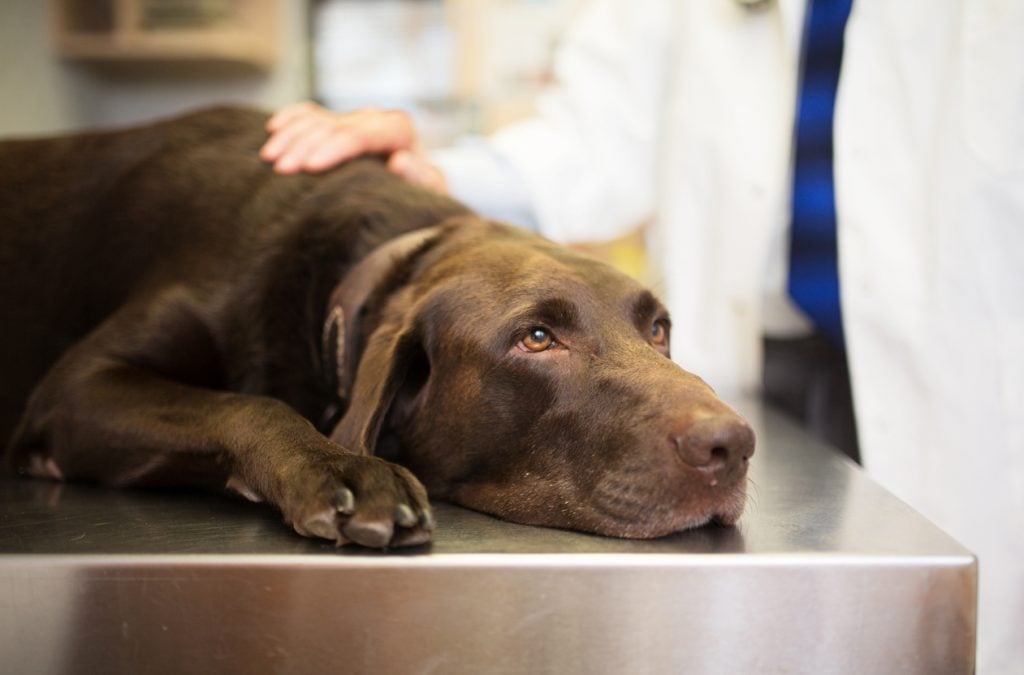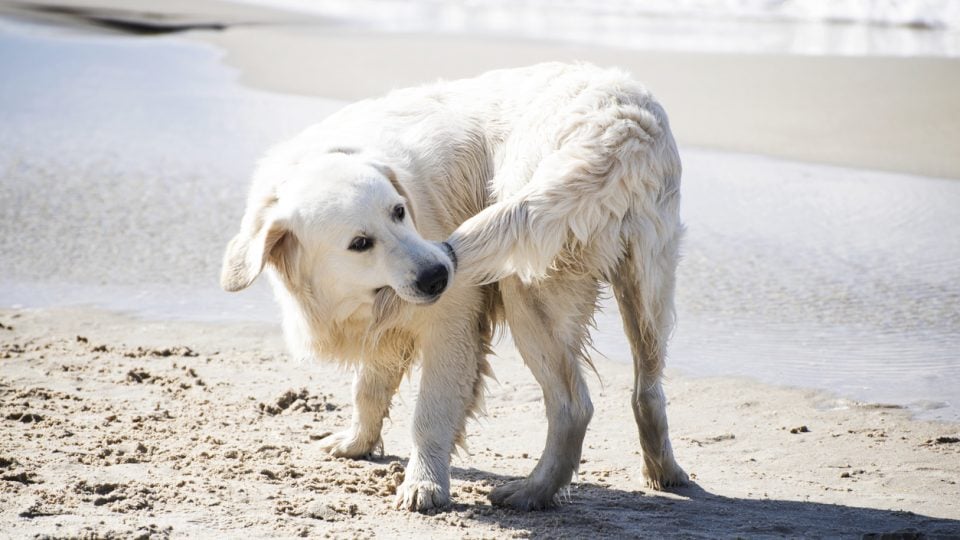Let’s face it, dogs are wacky creatures and their behaviour can often leave us humans scratching our heads. From following us to the bathroom to snacking on gross things, there are so many quirks to get used to as a dog parent. And while some of these can be cute rather than cringe, it can be hard to know if your dog’s spinning is cause for concern. So, read on if you’ve ever asked yourself: “why does my dog walk in circles?”
When it comes to your dog walking in circles, you may wonder if the behaviour is normal and positive. Could there be a health issue affecting their balance? Is this an indication of a more serious issue? And what should I do about it?
We dug into the research, and spoke with a dog behaviour expert—Los Angeles-based author and certified professional dog trainer, Nicole Ellis—to find out when dog circling behaviour is normal and when it’s time to see your vet.
Why Does My Dog Walk in Circles?
Dog circling can mean very different things and we’ll dive into some key signs of different behaviours. Note that any health concerns for your dog should be brought to your vet’s attention immediately.
Harmless circling behaviours
There are many non-concerning reasons why a dog may be moving in circles, whether it’s a toilet ritual or to get comfy before laying down in bed—it can even be a sign of play and excitement. Ellis explains her dogs can spin just for fun, like people. “We’re having playtime, and he’s spinning around, even potentially chasing his tail,” she says. “And in that case, that’s a happy dog spinning sign.”
Spinning can also be an offered behaviour in response to training. “A lot of my puppy clients, one of the first tricks they teach is a spin,” says Ellis. “And when dogs are excited and they want food, or they want a treat, the first thing these dogs often offer is a spinning circle.”
You may also notice that your dog likes to dig and spin when they’re out in the yard. “The ground slightly under the sun is going to be cooler,” explains Ellis, as dogs may be trying to get a little temperature relief. ” So, by spinning outdoors, they’re making a cooler soil to lay on, which is going to be more comfortable for sleeping, because their temperature is going to adjust to that.”
So, if your dog’s circling behaviour stems from a place of happiness and getting comfy, the chances are their actions are normal. But, if your dog appears to be in any distress, or suddenly begins to circle out of nowhere, there could be some health issues at play.
Health issues related to walking in circles
“If [circling] is all of a sudden new and random,” says Ellis, “we have to question, is there a medical reason that this is occurring? In which case, you’ll need to make sure there’s not a neurological reason. I would talk to a veterinarian or veterinary behaviourist.” Especially, as Ellis points out, if your dog is circling multiple times throughout the day. Be sure to also keep an eye on extended pacing, which could be a sign of stress or health issue, and requires consulting with a professional sooner rather than later.
Seizures
One potential neurological-related explanation for your dog exhibiting circling behaviour is seizures. In addition to running in circles, seizures in dogs may often include uncontrolled twitching and bathroom accidents, loss of consciousness or inability to focus, sudden falling, biting and drooling. It’s important to contact your vet to help identify the source of your dog’s seizures.
Stress
Walking in circles can also have health reasons that don’t require a rush to the emergency room. Circling may be a coping mechanism for dogs experiencing stress. “I know a dog that was in a shelter for years,” says Ellis, “and when he is stressed, he goes back to that crate spinning.” Dogs, just like people, can also have obsessive compulsive disorder (OCD). “Some dogs have OCD spinning, where that’s their behaviour that calms them down and makes them feel good, says Ellis.” She recommends talking to a veterinary behaviourist or certified dog trainer to see what might help your dog relax and work through those moments.
Ear infection
Another potential reason for circling could be an inner ear infection. “If we notice, while they’re spinning, they’re rubbing their head, that might be a sign of an ear infection,” says Ellis. “So definitely, if it’s out of the ordinary, or you notice them not finding that comfortable position, that can be a sign of even something minor that is medical related.”

THEPALMER via iStock
Senior dogs and serious issues
Circling behaviour in senior dogs can be a sign of more serious medical issues and require immediate veterinary attention. Whether you think your dog’s circling behaviour is a sign of ageing, or something more serious, it’s important to get in touch with a professional to find out the cause.
There are three common conditions that senior dogs can be more likely to develop which include moving in circles:
Vestibular disease
The first is vestibular disease. This affects the vestibular system which is responsible for balance and is comprised of the inner ear, brain stem, and certain parts of the brain. In addition to tight circling, nystagmus (flickering of the eyes in different directions), and falling, leaning, or head tilting are also symptoms.
Cushing’s disease
A second common condition found in senior dogs is Cushing’s disease, which is the result of excess hormones related to the pituitary and adrenal glands. Cushing’s can cause changes in behaviour, including pacing and circling, as well as loss of fur, weakness, and excess appetite, thirst, and urination.
Dementia
Another common condition that can present itself through walking in circles is dementia. Pacing and circling can be signs that your older dog is experiencing canine cognitive dysfunction (aka dog dementia) and may be accompanied by other symptoms such as disorientation, changes in sleep and/or appetite, toilet accidents, and acting withdrawn.
Bottom Line
A dog walking in circles can have many different causes, some positive and some negative, and it can be hard to know if our pets are just being silly gooses or if something more serious is at play.
As Ellis says, it’s important to take into account how your dog is doing overall and what they may be trying to tell you with their circling behaviour. Tail chasing, or spinning when you get home from work, are normal signs of excitement and play. Circling by the front door, for instance, may mean it’s time to take them for a walk or toilet break!
But, if circling is sudden, accompanied by other worrying symptoms, or seems uncontrolled—it’s time to involve veterinary and behavioural professionals to ensure your dog gets the help they need.



